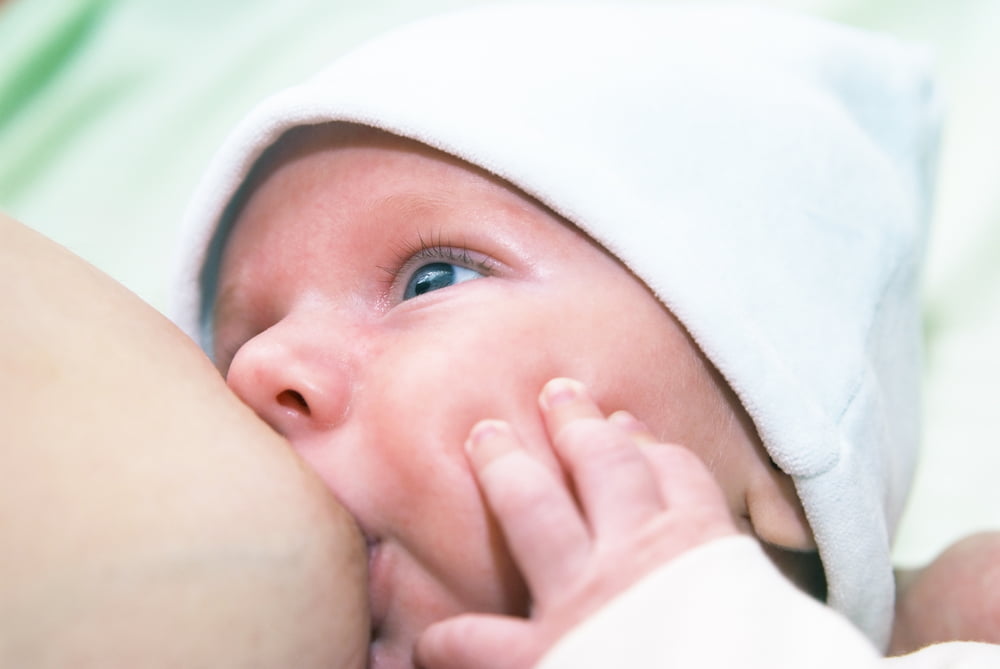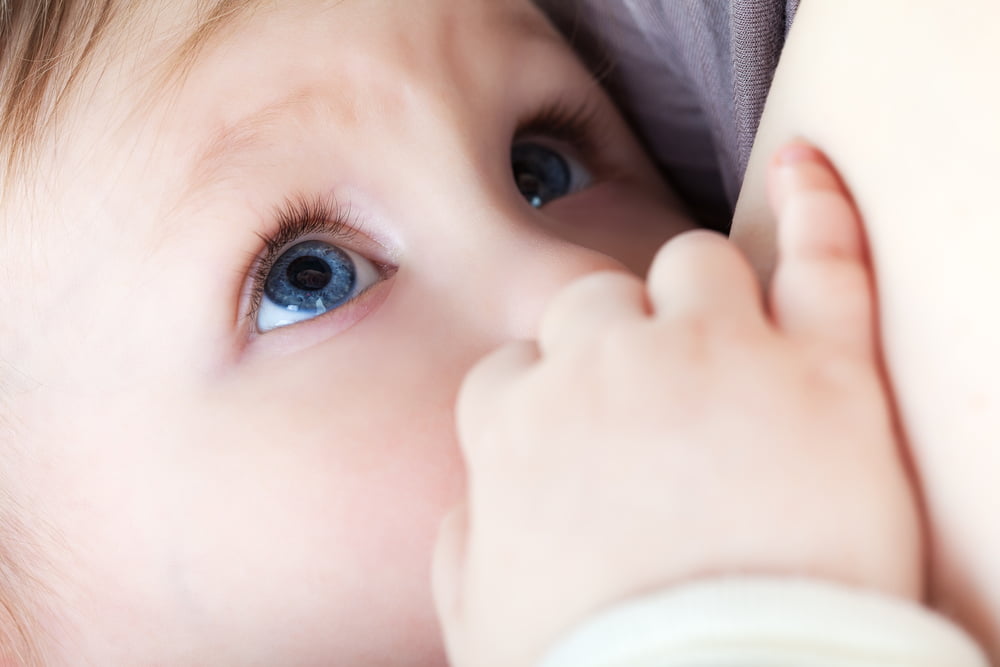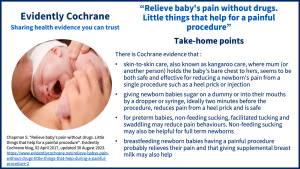If your baby has to have a painful procedure, evidence shows that there are things you can do to minimise their pain, including holding their bare chest to yours, giving a sugar solution or breast milk and allowing them to suck or to breastfeed. This blog takes a look.
Page last updated 30 August 2023 with new evidence on breast milk and on sugar for reducing pain.
Take-home points
Nothing cuts a parent to the quick like seeing their child in pain, especially new mums (in whom, as I well remember, even the mildest news item can prompt a fresh bout of weeping). We’d rather take anything ourselves than have our children suffer, even briefly, wouldn’t we? For babies born prematurely or in need of medical interventionA treatment, procedure or programme of health care that has the potential to change the course of events of a healthcare condition. Examples include a drug, surgery, exercise or counselling. , potentially painful procedures go with the territory. Giving painkilling drugs can be problematic and creams that numb the skin have not been shown to be effective for premature babies who spend their first days or weeks in Neonatal Intensive Care Units, where lots of invasive procedures are part of their care. The good news is we have evidence to show that there are other things we can do to help minimise discomfort for these little ones.
Take your cue from a kangaroo!
The Cochrane Review Skin‐to‐skin care for procedural pain in neonates (published February 2017) has found that skin-to-skin care, also known as Kangaroo Care, where mum (or another person) holds the baby’s bare chest to hers, seems to be both safe and effective for reducing a newborn’s pain from a single procedure such as a heel prick or injection. Because the 19 studies included in this review varied a lot, few results could be combined to provide stronger evidence. It’s not possible to know from this evidence how much benefit skin-to-skin care offers, but the results are in its favour.
Babies’ pain can be measured by studying physical things such as their heart rateThe speed or frequency of occurrence of an event, usually expressed with respect to time. For instance, a mortality rate might be the number of deaths per year, per 100,000 people. and also behaviour (such as grimacing and crying – though preterm babies cry less than full term babies in response to pain). These are sometimes combined in scoring systems such as the Premature Infant Pain Profile (PIPP), used in many of the studies in these reviews.
Sugar can help reduce pain
Giving newborn babies sugar on a dummy or into their mouths by a dropper or syringe has been shown to be effective and safe for reducing pain from a single, and to a lesser extent, repeated heel pricks. Giving sugar to babies two minutes before the painful procedure brings the greatest benefit and the effect lasts around four minutes. This evidence comes from the Cochrane Review Sucrose for analgesia (pain relief) in newborn infants undergoing painful procedures (published July 2016).
The review also includes studies exploring whether this helps in other painful procedures, but the evidence is conflicting and needs investigating further. The review authors say that combining methods, such as giving sugar and providing skin-to-skin contact, is really worth considering and may offer very good pain relief.
In August 2023 the review authors published evidence in a review looking at the effects of sugar on pain for newborn babies having heel-lance procedures, compared with control (doing nothing, or giving water or placeboAn intervention that appears to be the same as that which is being assessed but does not have the active component. For example, a placebo could be a tablet made of sugar, compared with a tablet containing a medicine.) or other non-drug treatments including non-feeding sucking, breastfeeding, breast milk, music, water and skin-to-skin care. They found that sugar probably reduces pain from a heel lance compared with control. They also found that the evidence is very uncertain about how sugar compares with other non-drug interventions, or in combination with them. There were a few minor immediate adverse events, such as gagging, that resolved without intervention.
Does this work for older children having needle procedures? The Cochrane Review Sweet tasting solutions for reduction of needle‐related procedural pain in children aged one to 16 years (published May 2015) asking this question found that there’s too little evidence to answer it.
Other alternatives to medicines for pain relief in babies and young children were considered in another Cochrane Review Non‐pharmacological management of infant and young child procedural pain (published June 2023). The authors conclude that non-feeding sucking, facilitated tucking (“containing the infant using a care‐giver’s hands on both head and lower limbs to maintain a ‘folded‐in’ position”) and swaddling may reduce pain behaviours in preterm babies. Non-feeding sucking may be helpful for full-term newborns. But there needs to be better evidence before we can be confident that these things are helpful. The authors also say that “No interventions based on a substantial body of evidence showed promise in reducing pain behaviours in older infants”.
Breast milk can help too

Join in the conversation on Twitter with @CochraneUK or leave a comment on the blog.
Please note, we cannot give specific medical advice and do not publish comments that link to individual pages requesting donations or to commercial sites, or appear to endorse commercial products. We welcome diverse views and encourage discussion but we ask that comments are respectful and reserve the right to not publish any we consider offensive. Cochrane UK does not fact-check – or endorse – readers’ comments, including any treatments mentioned.
Sarah Chapman has nothing to disclose.




Wow, a Very Nice blog post! Your site has given the best information From Your Articles. They are amazing and Useful to all people. Thanks for sharing this post and Impressive site.
Excellent summary! Well set out and organized and great to see user-friendly synthesis of Cochrane systematic reviews. To see effectiveness of breastfeeding and sucrose for babies in action, see the video: http://youtu.be/8Wzjxvrl91U
Remember to also look at the evidence to support non-sucrose solutions for reduction of procedural pain in newborn infants (Bueno et al, 2013).
What a fantastic summary of a lot of research! Very digestible for the lay reader. Will definitely forward this around. By the way, stay tuned for our updated review on non-pharmacological strategies for children less than 3 years of age!
Thank you very much! We’ll look forward to your updated review. We are going to update blogs to keep up with updates to the reviews so they blogs should stay accurate and relevant.
Sarah